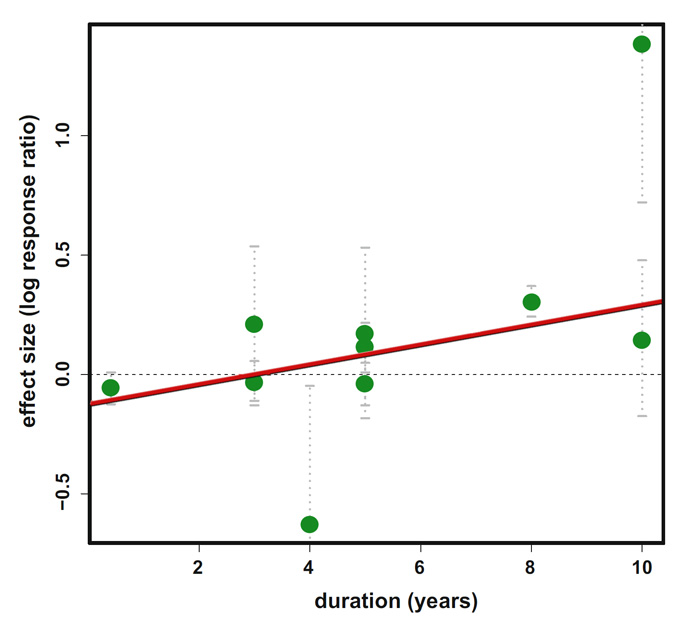| Follow @co2science |
Paper Reviewed
Veresoglou, S.D., Anderson, I.C., de Sousa, N.M.F., Hempel, S. and Rillig, M.C. 2016. Resilience of fungal communities to elevated CO2. Microbial Ecology 72: 493-495.
Writing as background for their work, Veresoglou et al. (2016) say that soil filamentous fungi "play a prominent role in regulating ecosystem functioning in terrestrial ecosystems," which fact they state "necessitates understanding their responses to climate change drivers in order to predict how nutrient cycling and ecosystem services will be influenced in the future." Unfortunately, the team of five researchers points out that there exists a "paucity" of studies investigating the impacts of rising atmospheric CO2 concentrations on the diversity of soil fungal communities. Thus, it was their aim to analyze the existing literature to see what has been collectively learned about this topic.
All in all, Veresoglou et al. located ten studies from which they were able to gather data and perform two complementary meta-analyses. Results of the first analysis revealed a neutral response, i.e., no change in soil fungal diversity in response to elevated CO2. In the second analysis, they write that they were able "to explain elevated CO2 effects after accounting for the duration of the experiments," which effects, as shown in the figure below, becoming increasingly more positive with the passage of time. And, as a result of these findings, the authors conclude that future "increases in CO2 concentrations are expected to lead to increases in fungal diversity." And that is good news for the future well-being of terrestrial ecosystems!

Figure 1. Relationship between the duration of the experiment and the effect size of the elevated CO2 on fungal richness. Mean effect sizes are represented with green circles. The thick continuous red line represents the mean for the meta-regression (P = 0.025). Within-studies trials have been pooled. Error bars represent 95% confidence intervals. Adapted from Veresoglou et al. (2016).




